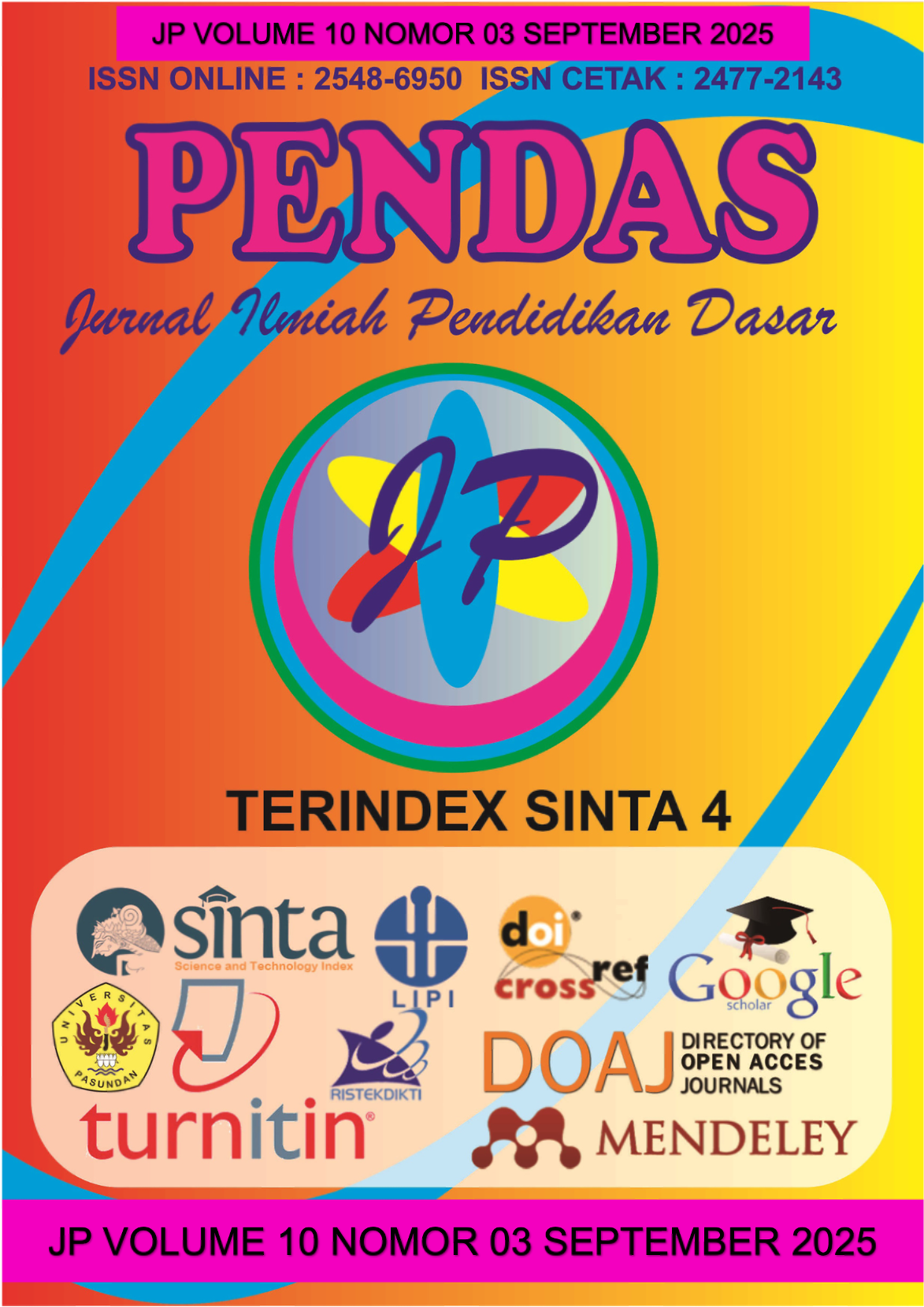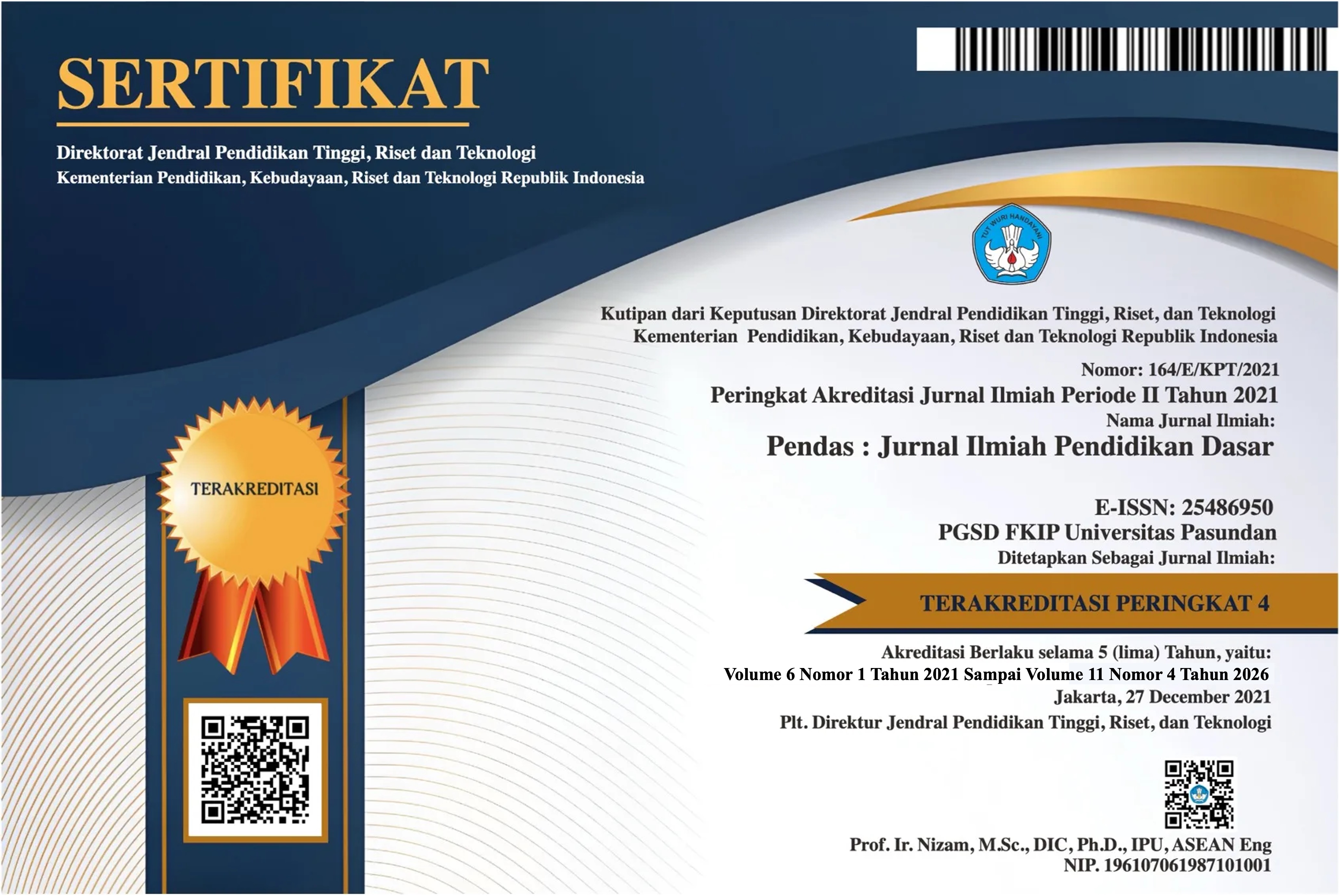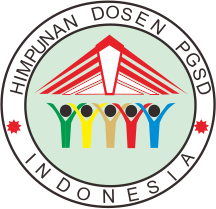PENGARUH MEDIA KUNANG-KUNANG HITUNG (FIREFLY MATH) TERHADAP KEMAMPUAN BERHITUNG PESERTA DIDIK KELAS 2 SEKOLAH DASAR
DOI:
https://doi.org/10.23969/jp.v10i03.33596Keywords:
Arithmetic skill, Firefly Math, Concrete Media, Elementary SchoolAbstract
The purpose of this study is to find out the effect of the use of Firefly Math Media on the arithmetic skill of second-grade students at SD Negeri 55/I Sridadi. The research design used a quantitative approach involving two classes, namely class 2D as the experimental class (13 students) and class 2C as the control class (17 students). Data were collected through pre-test and post-test, then analyzed using the SPSS 29 program. The results of the descriptive analysis showed that the average pre-test scores of both groups were relatively comparable (42,85 and 44,13). After treatment, the average score of the experimental class increased to 58,31, while the control class was 53,00, with a difference of 5,31 points. The normality and homogeneity assumption tests showed that the data were normally distributed and homogeneous. Analysis using Mixed Design ANOVA showed that the time factor had a significant effect on students' scores. Thus, it can be concluded that the use of Firefly Math Media is effective in improving students' arithmetic ability.
Downloads
References
Hidayati, N., & Santoso, R. (2021). Transformasi pendidikan: Maksimalkan potensi belajar dengan media pembelajaran interaktif. Al Banin: Jurnal Ilmiah Pendidikan Dasar, 1(1), 15–27. https://jurnal.unib.ac.id/index.php/albanin/article/view/14576
Maulidina, M. A., Susilaningsih, S., & Abidin, Z. (2018). Pengembangan Game Based Learning Berbasis Pendekatan Saintifik pada Siswa Kelas IV Sekolah Dasar. Jurnal Inovasi dan Teknologi Pembelajaran (JINOTEP): Kajian dan Riset dalam Teknologi Pembelajaran, 4(2), 113–118. https://doi.org/10.17977/um031v4i22018p113
OECD. (2022). Programme for International Student Assessment (PISA). https://www.oecd.org/en/about/programmes/pisa.html
Permatasari, K. G. (2021). Problematika pembelajaran matematika di sekolah dasar/madrasah ibtidaiyah. Jurnal Pedagogy, 14(2), 68-84. https://jurnal.staimuhblora.ac.id/index.php/pedagogy/article/view/96
Pristiwanti, D., et.al. (2022). Pengertian Pendidikan. Jurnal Pendidikan Dan Konseling (JPDK), 4(6), 7911–7915. https://doi.org/10.31004/jpdk.v4i6.9498
Rahmawati, S., & Santoso, B. (2021). Peran media pembelajaran interaktif dalam motivasi belajar matematika siswa. Jurnal Pendidikan Dasar Indonesia, 7(3), 43–50. https://journal.unpas.ac.id/index.php/pendas/article/download/27138/13039/102040
Sadiyah, H. (2022). Kenalkan Literasi Dan Numerasi Pada Anak Usia Dini Lewat Bermain Sambil Belajar. PPID. https://ppid.bogorkab.go.id/?p=207&page_title=Kenalkan_Literasi_Dan_Numerasi_Pada_Anak_Usia_Dini_Lewat_Bermain_Sambil_Belajar
Sugiyono. (2017). Metode Penelitian Kuantitatif, Kualitatif, dan R&D. Cetakan ke-26. Bandung: Penerbit Alfabeta.
Sugiyono. (2019). Statistika Untuk Penelitian. Bandung: Alfabeta.
UNICEF & Myriad Research. (2021). Next Generation Indonesia: A report on the socio-economic impact of COVID-19 on households in Indonesia. UNICEF Indonesia. https://www.unicef.org/indonesia/media/13106/file/Socio-Economic%20Impact%20of%20COVID-19%20on%20Households%20in%20Indonesia.pdf
Wahyulestari, M. R. D. (2018). Ketrampilan Dasar Mengajar di Sekolah Dasar. In Prosiding Seminar Nasional Pendidikan (Vol. 1, No. 1).
Downloads
Published
Issue
Section
License
Copyright (c) 2025 Pendas : Jurnal Ilmiah Pendidikan Dasar

This work is licensed under a Creative Commons Attribution 4.0 International License.



















